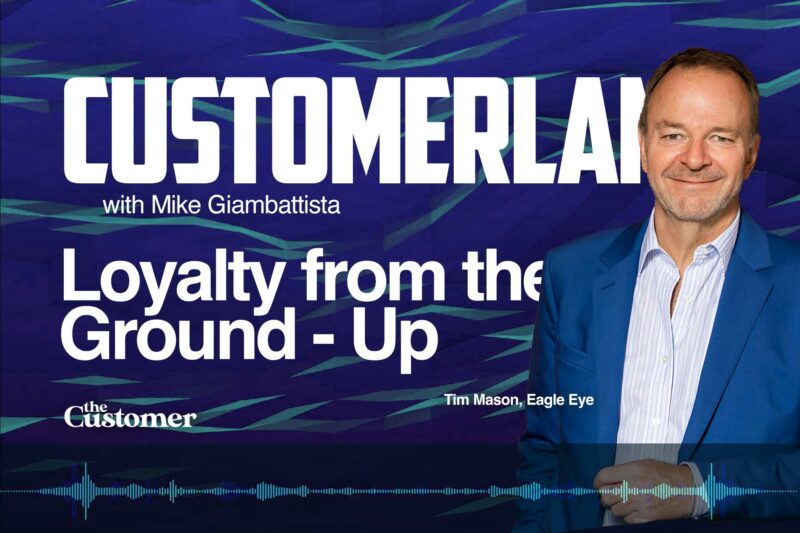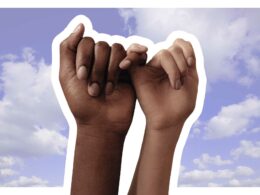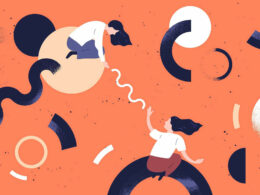Tim Mason is quick to say that he didn’t “invent” the Tesco Club card but if you look at the history of Tesco’s groundbreaking loyalty play, you’ll find his fingerprints embedded all over it. Today, Tim is CEO of Eagle Eye, another groundbreaking loyalty offering that has taken the best aspects of his learnings at Tesco and married them with technologies that can now do what was unimaginable back in the day. In addition to hearing what Eagle Eye is and does, it’s a unique opportunity to hear from one of the people responsible for developing what has become modern, programmatic loyalty.
Full Transcript Below
Mike Giambattista:
To Mason is CEO of Eagle Eye, and we’ll get into what Eagle Eye does in a few minutes. But Tim has a storied history in the world of loyalty. And we one on one hand I’m excited to have this conversation because a continuation of something we started at N R F, but Tim’s a wealth of knowledge when it comes to ideas surrounding loyalty and thereabouts having architected one of the, I would just have to say biggest and best and well known programs in the history of loyalty. But I’ll let you do a, a better job of explaining that than I will. Tim, thanks for joining me.
Tim Mason:
Thanks for having me on. It’s kind of you to ask me. And it’s a very charming introduction. So the vast bulk of my career, but not all of it. Now you know, time moves on was with Tesco. I was with Tesco for slightly over 30 years. And I was the guy that developed and launched the Tesco Club card. I deliberately didn’t say conceive, it was conceived by Terry Leahy, but it was developed and launched by, by me and my team. And so, and,
Mike Giambattista:
And just for context, because a US audience may not be as familiar with a European audience as, as what the significance of it is. So I just wanna pause there for a moment and just say, this was probably one of the first genuine loyalty programs to be brought to market at scale that the world had ever really seen. So
Tim Mason:
Yeah, it was 1995. It, it pretty quickly moved to about 12 million members. I think. It almost instantaneously propelled the business forward once we moved from pilot to to live. It’s one of the few things we all will, will have experienced in our career, the Hawthorne effect, you know, where trials do better than reality because there’s a spotlight shined on them and all that. This was actually the reverse of that. This did well in trial and stellar in real life because it had TV advertising because you could use it in every store and sort of all that stuff. It was launched as a thank you to customers, a little thank you from Tesco as part of the every little help strategy. So it was very, it was positioned in, in that way. And when we launched it, we had about 25% market share of the UK market.
Over the next decade, we drove on to a 33% market share of the market. And although lots of things were involved in doing that Terry Lee, he himself said that he thought the most significant thing that he’d done in his career was the launch of Clubcard. And, and the reason why he felt that was because we were, if not the first, one of the first to enter into the world of big data in a business that wasn’t naturally, you know, didn’t have first party data in that way. And so that was about halfway through my 30 years at Tesco. So I spent the, you know, my first 15 years were PC and my second 15 were P post C in terms of club card. And so mine was largely a marketing career. I ended up being deputy, c e o and, and did work in the us.
I came to the US and launched Trese, which was Tesco’s startup in California, Arizona, and Nevada. Left Tesco and then happened, actually, in fairness, there may be a pattern emerging here. Terry found it before I did. Terry was an investor in a business called Legal Eye, and he said, you gotta have a look at this. This is club card done digitally. So I went and had a look and it was very interesting. And then I had a bit more of a chat and, you know, time moved on. And then he rang me up and said, you know, we, we, we need a chairman defense yet. And I was sort of doing plural things at the time. And so I said, yeah, okay, I’ll, why not? Yeah, no, I like the business and you know, it’s good tech and I, it’s something I believe in, so yeah, why not? And then not long after that, boards being boards, they said, oh, you know, I think possibly we ought to change the ceo. What do you think? And I thought there is, you know, <laugh> no is felt that in the year, right? Yeah. And so I said, I’ll tell you what, why don’t I do it?
Senior independent director become, can become chairman. I’ll become c e o, you know, we’ll move on without missing a beat. So there was a bit of discussion about whether I really wanted to do it and whatever. Because obviously, you know, it was a, I’D left being deputy CEO of a business that was, had nearly a hundred billion of revenue, and I was joining one that had less than 10 million.
Mike Giambattista:
What year was that, by the way? When, when did that all happen?
Tim Mason:
Two 16, something like that. Do, do you know, is this really what you want to do? Is it big enough and whatever? And I mean, I’d already been involved in a startup in, in, so, you know, when I arrived in California, there was about 10 or 12 of us. And by the time, you know, we got the business to a billion a year and about 300 stores. So, but so I’d sort of done it before. And I think one of the things that you realize is that the main difference between big businesses and small businesses is more zeros. Actually a lot of everything including on your salary often. But a lot of everything else is pretty common. And I’ve really enjoyed it. It’s been challenging. We’ve been successful. We’re building a very nice, very well performing software as a service business.
You know, we’ve got great software as a service metrics in terms of projected annual recurring revenue, net recurring revenue, which to people who are not software people in your businesses, like, like for like, but if you are a SA or same store sales, you know, it, it, and we’re doing very well and we’re building a what will end up being a a a a sizable, I mean, you know, depending on other things, but smallish, but sizable British technology company. There ain’t that many of those. So yeah, it’s been good fun or is being good for, to be more accurate.
Mike Giambattista:
It still is. Well, that’s good to know. Yeah. I wanted to talk to you a little bit about, since you were I’m just gonna say one of the architects of, of Tesco club card, and you ran it for that long, you have a, a very good sense. You developed a pretty good sense of what works and what doesn’t, how people react, what they really want, what the mechanics of a, of a good solid loyalty program should look like. And you know, 15 years, even from 95 on, had an opportunity to implement a lot of change there. But here you are with Eagle Eye, it’s a, it’s a digital SAS-based offering with a very modern look at loyalty. So I kind of wanted to just get your thoughts on what loyalty was way back when in terms of meeting customer expectations and surprise and delighting them and what that, what that has to look like now to compete, because it’s a, it’s a different world now and customers are different and businesses are different and the technologies are different.
Tim Mason:
Yeah, I mean, I think the starting point was we sought to do three things to know who you were. We’d never known that before to know where you shopped. We only knew which departments you shopped in. We didn’t know what products you bought when we started. And to be able to give you some recognition for how much you spent, the more you spent, the more you got. But basically to say thank you for shopping, basic good manners, to be honest, we then, by the way, I see you because your listeners don’t get the opportunity to see your face. They won’t have seen you smile then. I am increasingly of the view that good marketing is good matter manners. And if your mom would’ve been proud of it, it’s probably right. So basic good manners say thank you. The second thing was to open up a direct marketing channel so that we had the ability to use direct marketing techniques to target you and perf use performance marketing tech.
Now, they were very, very basic, but that’s what we were seeking to do. And then the third thing we were seeking to do was to capture data so that we could run the business in aggregate, not through the lens of stores or SKUs, but through the lens of customers and make sure that when we thought we were making a store better, we were actually making it better for customers. And those were the three things. A lot of that hasn’t changed since then. The bit that significantly changed is the skill, the targeting of the performance marketing element, the middle piece. And that is where Eagle Eye comes in. You know, it, you the when you need Eagle, I is because you’ve decided that absolute personalization, not segmentation is the most cost effective way of driving performance and customer satisfaction, which I believe it is. You need some pretty hefty tech if you want to do that.
And it’s the bridge between segmentation and personalization. So that’s one, you know, it’s moved from it being a paper-based quasi broadcast technique, but you could measure the results to a segmented, targeted paper-based technique to a personalized technique. And then of course, the other thing is it’s digitally delivered. And, and so it’s those two elements of personalization and digitally deliver deli digital delivery that I think are the, the big steps that you need to take. You know, there’s a fundamental point about you’ve gotta make it worth my while to tap my phone or swipe my card. So there’s gonna be some value exchange. Now how you do that, and they’re getting to be cleverer ways of doing that, then simply, I’ll give a 1% discount, right? You know, so building up cash pots and stretch spend you know, we’ve just bought a business called Anti Knots who create challenges and only challenges on things you like and things you like to buy. Not massive challenges, but enough that both the retailer and the CPG knows, yeah, we stretch spend there before we paid that reward. And, you know, that’s the level of sophistication. So there’s new ways of doing it, but they’ve got to be a give to get.
Sponsor Announcement
What could you achieve if you knew what your customers expected ahead of time?
What if you could know what customers expect by category and by brand 12 to 18 months ahead of traditional brand tracking methods?
And what if you could know exactly where to adjust and where to spend in order to drive the most benefit every time?
A customer expectation audit allows you to identify areas that require strategic reinforcement, as well as pinpoint which values will contribute most to an emotional bond with your brand and optimize accordingly.
Customerland has partnered with Brand Keys, the world’s oldest loyalty focused consumer research firm to bring real world customer expectation audits to brands, brand managers, and to CX practitioners everywhere.
Wanna know where your brand stands and exactly what to do about it. Go to expectationaudit.com, that’s expectationaudit.com and download a sample audit today.
Tim Mason:
Has. I agree. Yeah, because my whole argument is that loyalty, not in terms of plastic cards and bits and bites, but loyalty as a human thing is as basic as loving and breathing and, you know, it’s, it’s a, it’s a, it’s a fundamental human characteristic.
Mike Giambattista:
So you mentioned your recent acquisition of UN knots and I’m slightly familiar. I’m with I think one or two of the principles at N R F and it’s, it’s pretty nifty gamified engagement they have. But can you talk a little bit about how the addition of anti knots into the Eagle Eye portfolio is affecting either your customers now, or, or how you are going about telling prospective customers about Eagle Eye capabilities?
Tim Mason:
I think if I start with Eagle Eye and then fold knots into it, if I may Eagle Eye is a core offer management technology, which can run loyalty programs, can run personalized promotions, and can run stored value and subscriptions and oth and, and other things like that. So it’s, it’s a technology that sits at the heart of your marketing stack and powers your transaction layer. It sits between data analytics, which you do with an 84 51 or a FCO or a Nielsen who, you know, whoever does your, your data analytics for you or you do it in-house and a ux which you develop through your marketing department with your agencies. We sit in the middle and we fire the data around that ecosystem with Salesforce, with Adobe, with goo, with whoever you choose to work with to make your marketing stack work. It’s, the reason that you do it is sort of twofold.
One is, well, there’s three reasons we haven’t got one, we haven’t got a loyalty program and we need one, one of the people you’re likely to talk to ISLI two is we built one in the 1990s and you know, this string and this ceiling wax is really wearing out now. It’s just not fit for purpose. And actually those are probably the only, the only two reasons why, why you, why you do it. And or sorry, the other one is it’s not bad. It works okay, but we want to go to personalization. We want to move past segmentation, we want to go to personalization. Those are quite big IT discussions. They really are quite expensive, you know, they, they imply replatforming or tooling up for the first time. Personalization is, I think, an obvious thing for businesses to do, but it is a big deal.
So quite a lot of strategic discussion and sales cycle and you know, just a lot to get through that and say, yeah, we want to do it, and we pick this technology to do it with un knots. And, and once you’ve bought the technology and put it in, you can do stored value, you can do subscriptions, you can do personalized promotions, you can do tiering, you can do challenges, you can do charity. You unlock the ability to run a very large marketing toolkit. Anti knots is different. It’s absolutely in the space, same space. But one, what Anai Knots does, it does performance related marketing challenges picked on the basis of your loyalty data. In order to do that, you, you, as a retailer share your loyalty data with anti lots. They then create a number of challenges, say 40 for the customer, all on product brands.
They like to buy set up values, which are something that they, they probably think, oh, I spend about that much. Actually, they don’t spend about that. They spend a little bit more than that, but they may because they don’t do all their shopping in one store. Whilst they may spend that much in Tropicana, they don’t spend all of that on Tropicana and stop and shop. They’re spending it somewhere else as well, right? So you put these challenges together, they say, yeah, I wanna do those 20, I don’t, I’m not gonna bother with those other 20. They start shopping, they start swiping, and they start earning a pot, which runs for a month.
So UN Nots do the analytics untouched by human hand, all done by ai, which comes up with your challenges. They do a wire frame that clips into the retailer’s app, which means that the retailer has a personalized version, but actually the heft is done by anti knots. And they do the transactions. So they do the whole thing. So what it’s opening us up to is a vertical slice through the three layers of data analytics, transactions, and ux, which at the moment we only work in the transaction layer. So it’s doing that for us. And the second thing that it’s doing is it’s offering retailers who are embarking on this journey, a skinnier tailor-made way to get into it because, and, and, you know, they get into it, and frankly, they like it because it works. Customers spend more. So the, the r ROI for the retailer is about seven to one, and the ROI for the CPG is about four to one. So very well.
Enjoying Customerland? You can find more of the Customerland episodes here.













